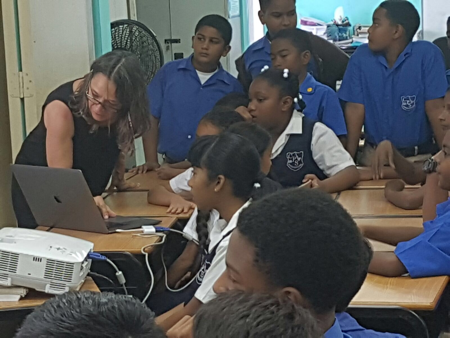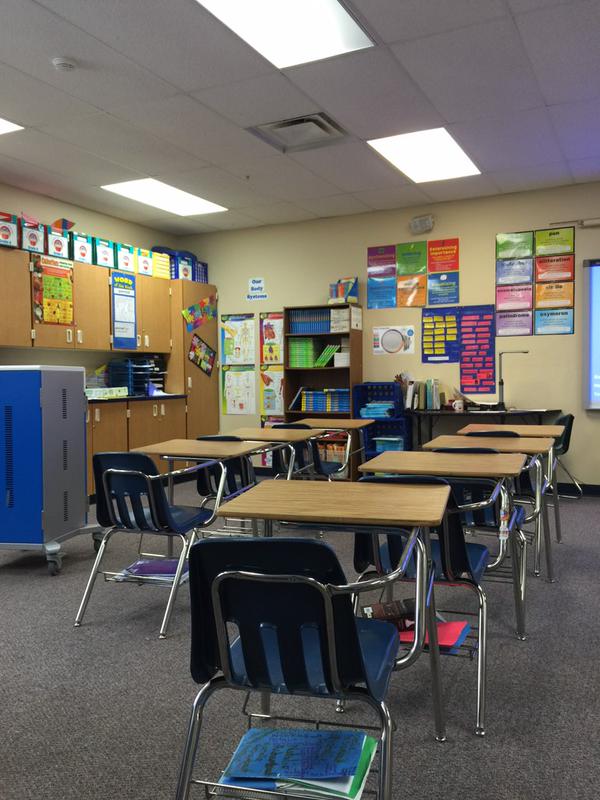As the COVID19 pandemic forces school districts nationwide to distance learning, I see the “classroom of the future” in action – and it is a classroom that is clearly segregated among economic class lines, where kids who are already behind are being left out altogether.

While I watch friends and colleagues posting pictures of their kids doing classes via Zoom or hear how much work their kids are still doing via online systems and software, I field emails from educators we work with who are trying to figure out what software their students will be able to access on the district Chromebooks when they don’t have Internet at home or who are looking for solutions that run offline on Android phones because that’s all the students’ parents have.
Suddenly, there are conversations in edtech circles about how important/vital/absolutely necessary it is to have solutions that are accessible in low-resource communities – and it is taking all of myself control not to shout, “Where were all you people before?” As I hear people talk about “rethinking” K12 products to meet these needs, I really – non-rhetorically – want to know how you can be working in education and have not thought about these students before?
There’s this sudden awareness about the gaping inequality of digital access at home when it comes to students from economically disadvantaged backgrounds. Although the actual situation is not one that is exacerbated by COVID-19, the global pandemic is only finally making it impossible to pretend this divide doesn’t exist.
As educational technology companies, at best, redirect their resources to try to find workarounds to meet this need, and at worse, sit around wringing their hands at this “incredibly difficult situation”, the truth is this unpreparedness to provide equitable education is the industry’s own fault – and every company that has operated as if there is no digital divide is partially to blame.

You know those “How I think I look/How I actually look” memes? That’s what most of edtech as an industry — and largely middle and upper class U.S. society — has become when it comes to digital access in this country. Far too many people at the funding and development ends of technology have operated as if the digital divide has been bridged – because it was something they never encountered in their day-to-day lives. But the reality – the actuality – is that in some communities upwards of a ⅓ of students – in some places, even more – have no access to the Internet.
Moreover, many students from low-income households have “access” via low-end devices, a spotty signal and limited data plans that make the concept of high bandwidth remote learning unrealistic.
A few months ago, I was in a conversation regarding a funding opportunity and was told, “Our organization wants cutting-edge. We want highly innovative solutions that will push the boundaries of what technology is capable of.”
“Creating high tech that runs on low tech is highly innovative,” I countered. “It’s not necessarily flashy, but it’s incredibly difficult to do.”
That’s true, I was told, but that’s not what their “focus” was. And that obsession with “our focus” is exactly what enabled so much funding to go into products and services in edtech that are suddenly inaccessible for the learners that most need to be served.

This is the part where I give a shout out to the U.S. Department of Agriculture who initially funded our projects where the technical innovation was developing education software that would run in low resource areas and across the digital divide, initially for tribal communities and later ELLs. As such, our apps feature offline capabilities. And thanks to Startup Chile, whose funding enabled us to further refine that technology in working with remote Andean communities – with resources in English and Spanish. For us, this isn’t something we have to “rethink” as it’s been a core part of our company values in creating tools focused on improving equity in education since Day 1.
As an industry, edtech has opted to develop for the “future” instead of the present. The obsession about being first or flashier was deemed a better investment than more accessible. For all the conference panels of equity in education, technology producers failed to account for what is really required to teach and reach all students.
If there are silver linings to come from this incredibly difficult situation – and hopefully there will be – I hope that one of them will be a better understanding when it comes to the scope of the digital divide, and that edtech as a whole doesn’t just go back to pretending this disparity can be dismissed.
Teachers are doing the absolute best they can to serve all of their students. Educational technology companies need to look inward and ask themselves have they done everything possible to create technology that could truly serve all learners and how they can do that better in the future.
Download our games for free until July 22!

